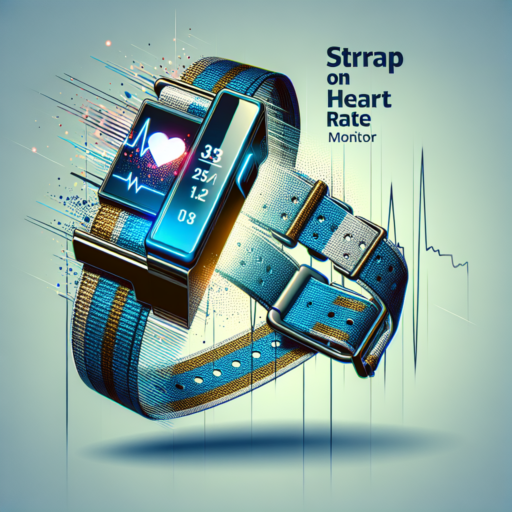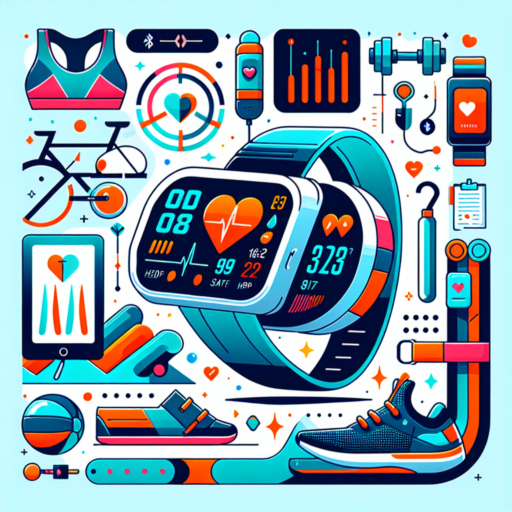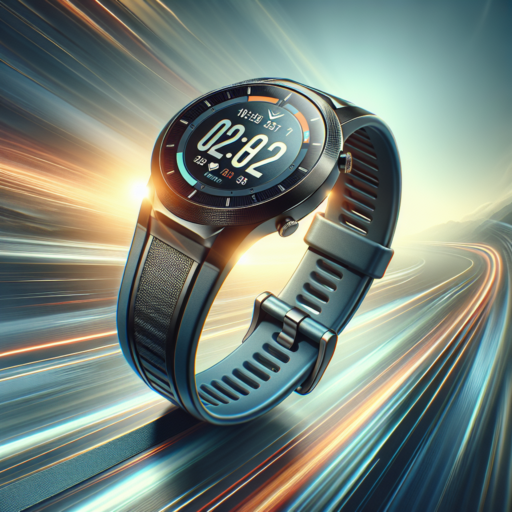What is a Strap On Heart Rate Monitor?
A Strap On Heart Rate Monitor is a type of personal monitoring device designed to measure and record your heart rate continuously. It is typically worn around the chest, directly against the skin, where it can accurately detect the electrical signals of your heart. This kind of heart rate monitor is favored for its precision and reliability, making it a popular choice among athletes, fitness enthusiasts, and individuals monitoring their heart health for medical reasons.
Unlike wrist-based or fingertip models, strap on heart rate monitors use a chest strap embedded with sensors that capture heart rate data more accurately. These devices often communicate with a wrist watch display or with a smartphone app, allowing users to track their heart rate in real-time during various activities. The direct placement of the strap ensures minimal interference and a secure fit, providing consistent readings even during intense physical activity.
Users of strap on heart rate monitors can benefit from detailed insight into their cardiovascular performance. By monitoring changes in heart rate, individuals can adjust their exercise intensity, improve endurance, and maximize workout efficiency. Additionally, these monitors are invaluable tools for training regimen adjustments, helping users to work within specific heart rate zones tailored to their fitness goals.
Benefits of Using a Strap On Heart Rate Monitor
Using a strap on heart rate monitor can significantly enhance your fitness journey and provide insights into your overall health. One of the key benefits of using a strap on heart rate monitor is the accuracy it provides. Unlike wrist-worn devices, which can give fluctuating readings based on movements, a strap on heart rate monitor maintains constant contact with your skin, ensuring more consistent and reliable data. This precision allows for effective monitoring of your heart rate zones, helping you to optimize your workouts for fat burning, endurance improvements, or cardiovascular health.
Another advantage is the ability to track your heart rate over time. This continuous monitoring can reveal trends in your heart health, offer insights into your recovery, and even flag potential health issues before they become serious. By understanding the nuances of your heart rate variability, you’re equipped to make informed decisions about your training intensity, rest periods, and overall lifestyle choices, all aimed at enhancing your cardiovascular fitness.
Moreover, strap on heart rate monitors often come with enhanced connectivity features. They seamlessly integrate with a wide range of fitness apps and devices, providing you with a holistic view of your health metrics. Whether you’re a professional athlete or a fitness enthusiast, the ability to sync your heart rate data with other metrics such as pace, distance, and calories burned allows for a comprehensive analysis of your performance. This connectivity not only motivates you by tracking your progress over time but also tailors your training regimen to suit your specific health and fitness goals.
How to Choose the Right Strap On Heart Rate Monitor for You
Finding the ideal strap-on heart rate monitor involves taking into account both your fitness goals and your personal comfort. With myriad options available, identifying the best fit for your workout regime can significantly enhance your training efficiency. Here’s how to narrow down your choices and select the perfect model suited to your needs.
Fitness Objectives and Features
Consider your primary fitness activities when choosing a heart rate monitor. Whether you’re an avid runner, a cyclist, or someone who enjoys a variety of gym activities, look for a device that caters to your specific type of exercise. Key features to consider include water resistance for swimmers, GPS capabilities for runners, and multisport options for triathletes. Additionally, assess whether you need basic heart rate data or more advanced metrics such as heart rate variability, recovery time, and VO2 max estimation.
Comfort and Wearability
The comfort level of your heart rate monitor strap is crucial, as you’ll be wearing it during long training sessions. Strap material and adjustability play significant roles in overall comfort. A soft, flexible strap that does not chafe or irritate your skin is ideal. Look for adjustable straps to ensure a snug, secure fit that stays in place without being too tight. Remember, the right fit is vital for accurate heart rate readings.
Compatibility and Connectivity
In today’s connected world, ensuring your strap-on heartarte monitor syncs with your existing devices is a must. Most models offer Bluetooth and ANT+ connectivity, making it easy to pair with smartphones, smartwatches, and fitness apps. Check device compatibility to ensure seamless integration with your training ecosystem. Real-time data tracking can significantly enhance your training, allowing you to adjust your effort levels on the fly and track your progress over time.
Top 5 Strap On Heart Rate Monitors in 2023
Searching for the best strap on heart rate monitors in 2023 presents a unique challenge as athletes, health enthusiasts, and casual users seek devices that blend accuracy, comfort, and connectivity. The right heart rate monitor can significantly enhance your training sessions, providing real-time data that helps in fine-tuning your efforts for optimal performance. This year, the market is replete with innovative models that cater to a wide array of preferences and requirements.
Accuracy and comfort emerge as paramount concerns when selecting a strap on heart rate monitor. The leading brands have harnessed cutting-edge technology to ensure their products deliver precise heart rate readings without sacrificing wearability. With advancements in textile technology, these straps now boast a level of comfort that makes them barely noticeable during intense workouts or prolonged use.
Connectivity also plays a crucial role in the functionality of heart rate monitors in 2023. The top picks seamlessly integrate with popular fitness apps and devices, enabling users to track their progress, set goals, and analyze data with unprecedented ease. Whether you’re a professional athlete or a fitness enthusiast, the latest strap on heart rate monitors offer a combination of features that promise to elevate your training experience.
How to Use a Strap On Heart Rate Monitor Effectively
Utilizing a strap-on heart rate monitor effectively can elevate your fitness journey by offering real-time insights into your cardiovascular health and workout intensity. These devices are invaluable for athletes and fitness enthusiasts aiming to optimize their training regimens. To ensure you’re getting the most out of your heart rate monitor, it’s crucial to understand the proper setup and use.
Find the Right Fit
Firstly, ensuring that the heart rate monitor strap fits correctly is fundamental. The strap should be snug against your skin but not so tight that it feels uncomfortable or restricts breathing. Generally, positioning the strap right below the chest muscles ensures optimal sensor contact. Checking the fit before each use is a good practice, as the strap may stretch over time.
Keep It Clean
Maintenance is another key aspect of using a heart rate monitor effectively. After each workout, rinse the strap under cool water and let it air dry. For deeper cleaning, follow the manufacturer’s instructions, which typically suggest occasional hand-washing with mild soap. This not only extends the life of your device but also maintains its accuracy by ensuring the sensors are clean.
Consistency in wearing your heart rate monitor and interpreting the data it provides is vital. Regularly monitoring your heart rate during different types of exercises allows you to adjust your intensity based on your fitness goals—whether that’s burning fat, improving stamina, or enhancing cardiovascular health. By closely observing patterns over time, you can tailor your workouts to maximize efficiency and effectiveness, all through the intelligent use of your strap-on heart rate monitor.
Accuracy of Strap On Heart Rate Monitors: What You Need to Know
Strap-on heart rate monitors have become invaluable tools for fitness enthusiasts and athletes aiming to optimize their workouts and health routines. However, understanding the accuracy of these devices is crucial to effectively leverage their benefits. Unlike wrist-worn devices, strap-on heart rate monitors are placed closer to the heart, typically around the chest, which can potentially offer more accurate readings. Yet, several factors can influence their precision.
Key Factors Influencing Accuracy
- User Fit: The accuracy heavily depends on how well the device fits. A strap that is too loose might not pick up the heart rate adequately, while one that is too tight could be uncomfortable and restrict blood flow, affecting the readings.
- Placement: Proper placement is critical. The monitor should sit right below the chest muscles for optimal sensor contact and accuracy.
- Physical Interference: Sweat and body hair can sometimes interfere with the signal, leading to erratic readings.
The technology behind strap-on heart rate monitors has seen significant advancements, leading to improved accuracy over the years. Modern devices now incorporate algorithms that filter out noise and irregular heartbeats, thus offering a clearer picture of the user’s heart rate. Nevertheless, it’s important for users to acknowledge the potential external variables that could impact the device’s performance.
When considering a strap-on heart rate monitor, it’s essential to conduct thorough research on specific models and brands. Looking into user reviews and third-party testing results can offer insights into the monitor’s performance under various conditions. Moreover, comparing features and understanding the technology used in the device can help in making an informed purchase decision that meets your accuracy requirements.
Strap On Heart Rate Monitors vs. Wrist-Based: Which is Better?
Choosing between strap-on heart rate monitors and wrist-based models is a decision that hinges on several key factors, including accuracy, comfort, and the type of activity you’re engaged in. Both types have their unique advantages, making them more or less suitable for different users and uses.
Accuracy of Measurement
Strap-on heart rate monitors are typically lauded for their superior accuracy. They are worn around the chest, directly over the heart, which allows them to measure heart rate with a high degree of precision. This accuracy is especially important for athletes and individuals who rely on precise heart rate data to guide their training. On the other hand, wrist-based monitors, while offering the convenience of a watch, may sometimes provide less precise readings due to their placement on the body where blood flow is not as strong or consistent as it is at the chest.
Comfort and Convenience
When it comes to comfort and convenience, wrist-based monitors generally score higher. They are easy to wear throughout the day and often include additional features like time display, step counting, and sleep tracking. Strap-on models, while less noticeable during exercise, may not be as comfortable to wear for extended periods, especially for those who are not accustomed to wearing something around their chest.
Activity Suitability
The type of activity you engage in can also influence your choice between these two types of heart rate monitors. For activities that involve a lot of movement or involve water, such as swimming, a strap-on heart rate monitor may provide more consistent and reliable data. In contrast, for activities like running or cycling, where convenience and ease of access to real-time data are valued, wrist-based monitors might be the preferred choice.
Caring for Your Strap On Heart Rate Monitor: Tips & Tricks
Keep it Clean and Dry
Maintaining your strap-on heart rate monitor begins with keeping it clean. After each use, detach the sensor from the strap and gently wipe it using a soft, damp cloth. Avoid using harsh cleaning agents as they can damage the sensor’s sensitive components. For the strap, a mild soap solution and lukary rise with water can do wonders. It’s crucial to let both the strap and sensor air dry completely before storing them to prevent moisture build-up, which can lead to skin irritation or hardware malfunction.
Store Properly When Not in Use
Proper storage is essential for extending the lifespan of your heart rate monitor. Avoid exposing it to extreme temperatures or direct sunlight when not in use. A cool, dry place is ideal. To prevent any potential stretching or bending, lay the strap flat or hang it up. Remember to detach the sensor, if possible, to save battery life and minimize exposure to elements that can cause corrosion or battery leakage.
Regular Maintenance Checks
- Check for wear and tear: Regularly inspect your strap and sensor for any signs of damage, such as tears or cracks. Early detection can help you avoid inaccurate readings or complete device failure.
- Test battery levels: Many strap-on heart rate monitors come with replaceable batteries in the sensor unit. Make it a routine to check and replace these batteries periodically to ensure your monitor is always ready to perform accurately during your workouts.
- Update software: If your heart rate monitor connects to any apps or devices, ensure it’s using the latest software. Manufacturers often release updates that can improve accuracy, functionality, and compatibility with other devices.
Integrating Your Strap On Heart Rate Monitor with Fitness Apps
Integrating your strap-on heart rate monitor with fitness apps can significantly enhance your exercise routine, giving you accurate real-time data to optimize your workouts. Many fitness enthusiasts overlook the importance of syncing their heart rate monitors with their preferred apps, missing out on a wealth of fitness insights. By harnessing the power of both, you can unlock a new level of personal fitness understanding and achievement.
To ensure a seamless integration, start by selecting a heart rate monitor and a fitness app that are compatible. The majority of modern strap-on heart rate monitors support Bluetooth and ANT+ technologies, making them easily connectable to a wide range of smartphones and fitness devices. Once connected, your heart rate data can be viewed in conjunction, providing a comprehensive overview of your workout’s intensity, helping you to stay within target zones for optimal fat burning and cardiovascular improvement.
Steps for Successful Integration
- Check the compatibility of your heart rate monitor with your fitness app.
- Establish a connection using Bluetooth or ANT+ options available on your device.
- Adjust the settings in your app to ensure data from your heart rate monitor is accurately captured and displayed.
- Begin your workout and monitor your heart rate in real-time for tailored exercise adjustments.
Maintaining this integration not only helps in keeping a precise log of your workouts but also in understanding your heart’s response to different types of physical activities. By closely monitoring these responses, you can make informed decisions about the pace and intensity of your workouts, leading to better health and fitness outcomes. Remember, the key to maximizing the benefits of your strap-on heart rate monitor is consistent integration with the right fitness apps, transforming your exercise regimen with targeted insights and enhanced performance tracking.
Real User Reviews: Strap On Heart Rate Monitors in Action
Exploring real user experiences with strap-on heart rate monitors unveils a treasure trove of insights, shedding light on their functionality in diverse conditions. Users often highlight how these devices have become indispensable companions for their fitness journeys, offering precise monitoring that guides their workout intensity and duration effectively.
Among the feedback, a common thread is the appreciation for the ease of use and comfort of wearing these monitors. Many emphasize the adjustable straps that ensure a snug and secure fit, preventing any slide or shift during vigorous activities. The convenience of having essential heart rate data at their fingertips, without the need for bulky equipment, is frequently applauded by those who prioritize a lean and efficient workout setup.
The accuracy of strap-on heart rate monitors is also a pivotal aspect mentioned in reviews. Users note the difference these monitors make in tracking heart rate zones, allowing for optimized cardiovascular fitness and better understanding of personal limits and capabilities. Particularly, the ability to sync data with smartphones and fitness apps is highlighted as a game-changer, enabling easier tracking of progress and goal attainment over time.










